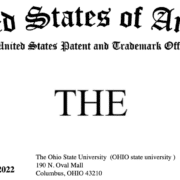RESPONDING TO A REFUSAL TO REGISTER A TRADEMARK BASED ON DESCRIPTIVENESS
 Even if the mark you are attempting to register is different enough from other registered marks such that there is not a likelihood of confusion between your applied for mark and a registered mark, registration may be refused if the mark is not distinctive. Distinctiveness of a mark generally lies on a spectrum, with inherently distinctive marks (registerable) on one end of the spectrum, and generic marks (unregisterable) on the other end. Inherently distinctive marks include those marks that are fanciful (made up terms such as EXXON, GOOGLE, ADIDAS), arbitrary (words that have no relation to the product or service such as APPLE for computers), or suggestive (words that provide a hint to a particular quality or feature of the product or service). Inherently distinctive marks are registrable without proof of acquired distinctiveness. Generic marks ( such APPLE for the fruit) are those words that are commonly used to identify the product or service, and as such are not registerable. Somewhere in between lie descriptive marks – those marks that describe a characteristic of the goods or services. Descriptive marks are only registrable if they have acquired distinctiveness or secondary meaning.
Even if the mark you are attempting to register is different enough from other registered marks such that there is not a likelihood of confusion between your applied for mark and a registered mark, registration may be refused if the mark is not distinctive. Distinctiveness of a mark generally lies on a spectrum, with inherently distinctive marks (registerable) on one end of the spectrum, and generic marks (unregisterable) on the other end. Inherently distinctive marks include those marks that are fanciful (made up terms such as EXXON, GOOGLE, ADIDAS), arbitrary (words that have no relation to the product or service such as APPLE for computers), or suggestive (words that provide a hint to a particular quality or feature of the product or service). Inherently distinctive marks are registrable without proof of acquired distinctiveness. Generic marks ( such APPLE for the fruit) are those words that are commonly used to identify the product or service, and as such are not registerable. Somewhere in between lie descriptive marks – those marks that describe a characteristic of the goods or services. Descriptive marks are only registrable if they have acquired distinctiveness or secondary meaning.
One of the more common grounds for rejection of an application for registration of a trademark is that the mark is “merely descriptive” of the trademark owner’s goods or services. In response to an initial (first office action) descriptiveness refusal issued against an application, the trademark owner has four options: (1) file a response to the office action arguing that the mark is inherently distinctive, (2) accept that the trademark is descriptive and provide evidence that it has “acquired distinctiveness”, (3) accept registration on the Supplemental Register, or (4) abandon the application. The decision on which of these options is best depends on the descriptiveness of the trademark, the length of use, the past sales and marketing, and the trademark owner’s budget. However, each of these has its hidden weaknesses that a trademark owner should discuss with an experienced trademark attorney before making their decision.
Filing a Response to the Office Action Arguing the Mark is Inherently Distinctive
The line between descriptive marks and suggestive marks is often blurry and an experienced trademark attorney can assist you in determining (and arguing to the Trademark Office on your behalf) on which side of the line your mark falls. There are a number of decisions out there where Federal Courts and/or the Trademark Trial and Appeal Board (TTAB) have established guidance as to where that line should be drawn in certain situations. An experienced trademark attorney can apply that law to the facts of your application and, in some cases, can make an effective argument that your mark is suggestive (registerable) rather that descriptive (not registerable). If there is a possibility of overcoming the rejection, this option should always be on the table and included in a response to the office action.
Submitting Evidence of Acquired Distinctiveness
Another option in responding to a rejection based on alleged descriptiveness is to submit actual evidence that the applied-for mark has acquired distinctiveness in connection with your goods or services. This can be done alone, or in combination with a response arguing that the mark is inherently distinctive. Acceptable evidence of use can include:
- advertising and promotional materials that specifically show or promote the applied-for mark in use as a trademark and source-identifier;
- dollar figures for advertising devoted to such promotion;
- dealer and consumer statements indicating recognition of the applied-for mark as a trademark;
- other evidence that shows consumer recognition of the applied-for mark as a trademark for applicant’s goods.
Unless your mark is extremely descriptive, if it has been in use for five years or more, the trademark office will generally allow trademark owner to claim acquired distinctiveness under the Lanham Act’s five-year presumption by filing an affidavit attesting to five years use with no additional evidence. If the trademark is extremely descriptive or if it hasn’t been in use for five years, the trademark owner can provide evidence of customer affidavits, sales, advertising, earned media and more to show that it has met this threshold.
Registering on the Supplemental Register
Another option would be to accept the trademark examiner’s assertion that the mark is merely descriptive, but amend the application to seek registration on the Supplemental Register. However, marks registered on the Supplemental Register do not receive all the protections given to those registered on the Principal Register. Specifically, placement on the Supplemental Register does not provide constructive notice of ownership or a presumption of ownership in the event of infringement litigation, does not support a later claim of incontestable status, does not imply the right to exclusive use of the mark, nor does it allow the mark owner to request exclusion of imports by the Bureau of Customs. It does allow the registrant to use the federal registration symbol ® and it serves as a bar to subsequent registrations that would create a likelihood of confusion.
Abandoning the Application
While this may seem obvious, it is important to note that a trademark application may be withdrawn without prejudice at any time before it is adjudicated before the TTAB in an appeal. This means that a trademark owner may abandon its trademark application for any reason and file it again sometime in the future. This approach has a few clear drawbacks: the trademark owner will have no federal protection for their trademark and will have to rely on their common-law rights, which apply to the geographic area where a trademark owner can show it has trademark recognition of its mark. This will make enforcement of the trademark difficult and potentially expensive. There will also be a public record that the application was abandoned. This will not be a legal admission of any kind, but could provide an opposing party with additional ammunition in a legal dispute.
There any many factors to consider when deciding the best way to deal with a descriptiveness refusal. If a trademark is truly descriptive (i.e. there little to no chance of winning on an appeal), then providing evidence of acquired distinctiveness (if possible) or amending to the supplemental register may be the only way to gain any federal rights in the descriptive mark. However, for a company faced with this decision, it is always important to consider the long-term consequences. Remember that every huge company was once a startup facing similar decisions about their trademarks and a trademark registration is only as valuable as its owner’s ability to enforce it against potential infringers. A trademark owner should consider all of the options before making a decision that could affect the long-term strength and scope of their trademark.








